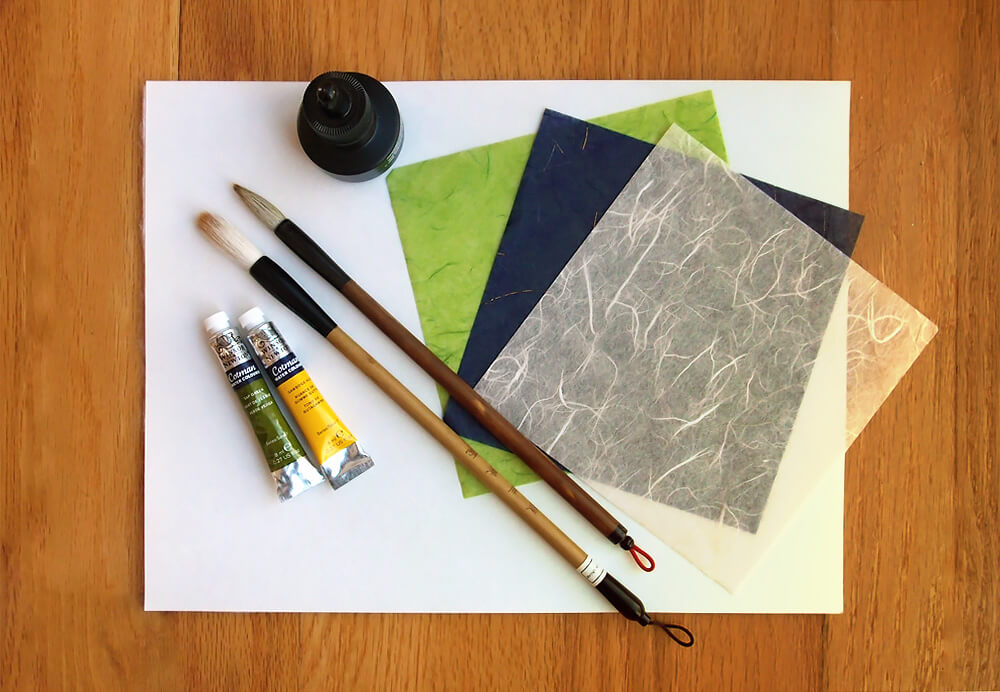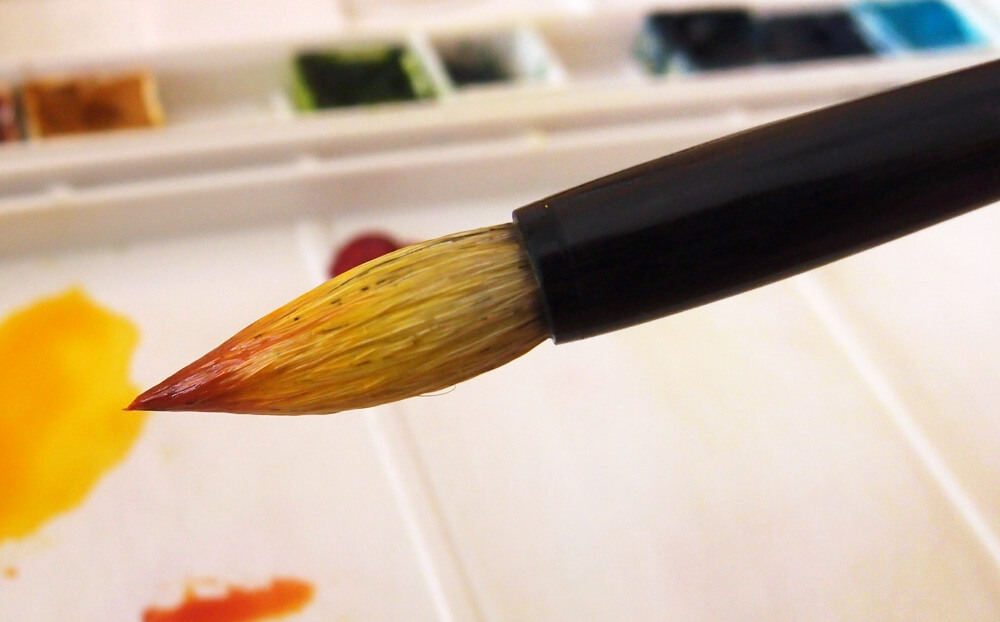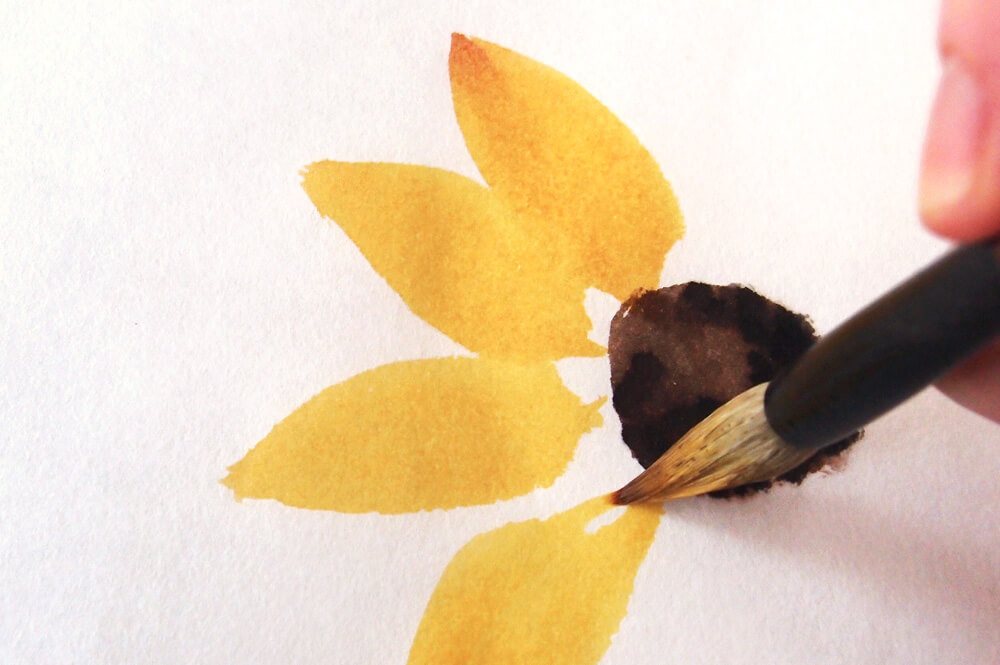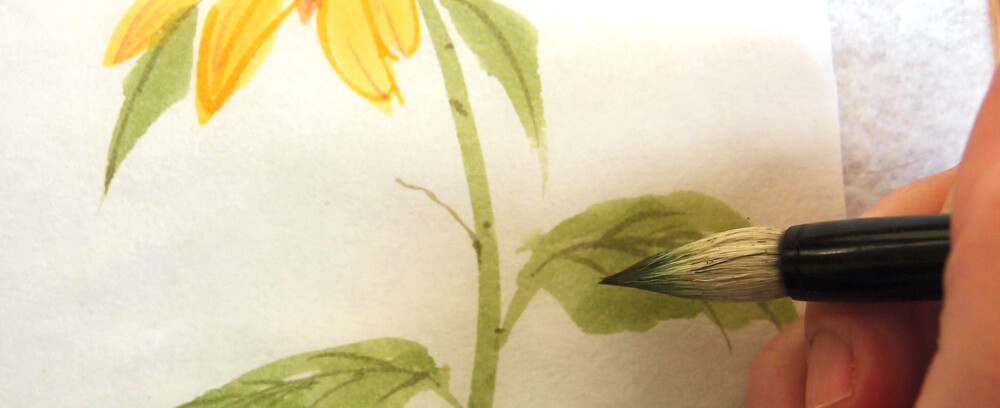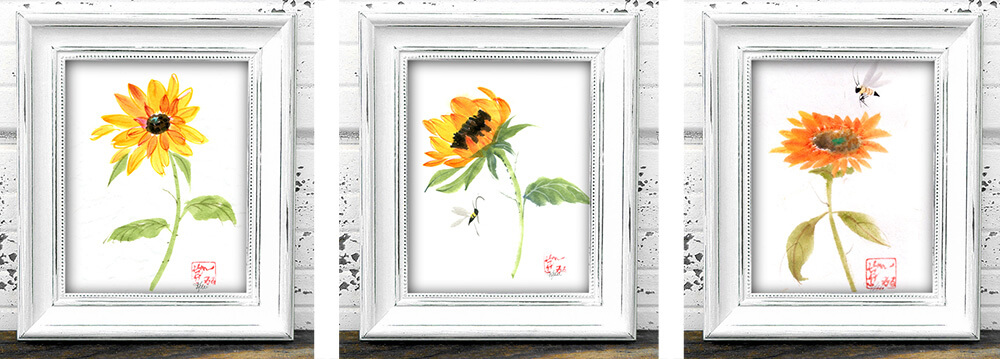Sunflowers are very fun to paint in the Chinese Brush painting style. This is a painting style that uses simple brushstrokes to convey the essence of a subject.
For today’s project we will be focusing on the xieyi style which means “to write a picture.” There is no pre-drawing of a subject; all painting is done with the brush. The idea is to convey the essence or spirit of a subject rather than an exact botanical representation.
Required Chinese brush painting supplies
You will need a medium-size mixed Chinese brush, called a “combination” or “flow” brush. The core is made from stiff bristles which help to retain a nice point. The outer part is made from softer bristles which allow the brush to hold a large amount of water and paint.
I am painting on a mulberry paper, also called shuen paper. Mulberry paper comes in a variety of colors and textures—feel free to experiment and pick any that you like. However, you may want to make a few practice paintings on newsprint to get familiar with the brushstrokes before using your mulberry paper.
NOTE: You will be painting with your paper flat on the table on front of you; you will not need an easel or any kind of special drawing surface.
For this sunflower painting we will be using watercolor paints (yellow, red, green, blue, and brown), black sumi-e ink, and white ink (optional). You’ll also need the following supplies:
• A container of water
• A palette or old plate for mixing paints
• Some paper towels for blotting excess water from the brush
• A piece of felt or heavy cloth to put under your paper so that it doesn’t stick to the table as you paint
Typical Chinese brush painting supplies: combination brushes, mulberry paper, watercolor paper, and ink
1. Start with a dark brown circle (the sunflower center)
Wet your brush with clean water, dip it into your brown paint, and roll the brush on the palette to distribute the paint in the brush. Holding the brush vertically above your paper, form the first half of the circle by painting a “c” shape. Form the other half of the circle by painting a reverse “c” shape.
If the circle has a space in the center you could leave it as-is or add a dot of a blue-green color which is typical in traditional Chinese Brush paintings. Dip the brush into the ink and add a few dots to represent the seeds.
2. Paint the shapes of the sunflower petals
Clean your brush and load it with yellow and then dip it into the red paint to coat the brush tip.
Starting a few inches away from the sunflower center, press the brush onto the paper and pull it towards the center of the sunflower, releasing the pressure on the brush to taper the stroke as you get to the center.
Place two strokes next to each other to make a wider petal. Vary the length of the petals as you move around the center for some visual interest.
3. Add the sunflower stem & leaves
Clean your brush and load it with green mixed with a tiny amount of ink to darken it to make an olive green color.
Hold the brush vertically above your paper and paint a thick line for the stem, moving from the flower head down to the bottom of the paper. Try to maintain even pressure on the brush as you move it.
To make the large sunflower leaves, first paint a thin line extending upward from the stem. Then press the brush firmly onto the paper at the end of that line, pulling downward so that you are using the full length of the brush head to create the leaf:
Add a few smaller strokes using the same method you used for the flower petals to indicate leaves closest to the flower.
4. Add details in the sunflower leaves
When the paper has almost dried, add veins to the leaves using a darker green color (add more ink to your green mix) or use white ink for contrast.
You can also outline the petals in a darker color to refine some of the petal shapes. Use a slightly drier brush for outlining and don’t press hard on the brush tip.
5. Experiment—make it your own!
Once you have the basic sunflower painted you can begin experimenting.
Try painting the flower head in different arrangements, using different color combinations, or adding embellishments like a bee or your name seal. Cheers!
Big thanks to Kelli McNichols for sharing this sunflower brush painting tutorial! To learn more about Kelli or her art classes, please visit her website.
This post may contain affiliate links.
